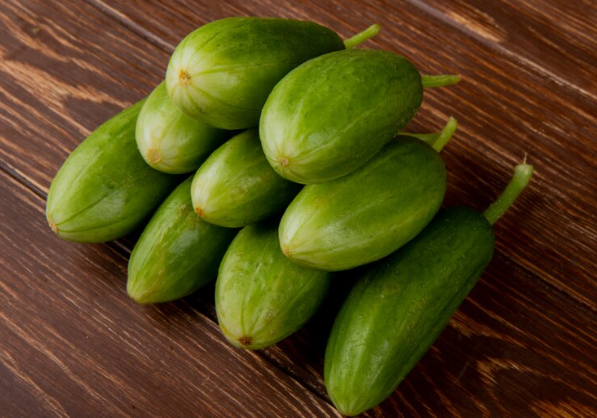The bo gourd, also known as the calabash or bottle gourd, is one of the oldest cultivated plants in human history. Its origins can be traced back thousands of years to Africa and Asia, where it was initially grown for its utility rather than for food. Archaeological evidence suggests that ancient civilizations used bo gourds as containers, musical instruments, and even flotation devices. The versatility of the bo gourd made it an indispensable part of daily life in many cultures.
In Africa, the bo gourd was often used to create intricate carvings and decorative art, symbolizing various cultural beliefs and traditions. In Asia, particularly in India and China, the gourd was revered for its medicinal properties and was often depicted in religious iconography. The bo gourd’s ability to adapt to different environments and its multipurpose nature contributed to its widespread cultivation and use.
Culinary Uses and Nutritional Value
While the bo gourd is primarily known for its utilitarian uses, it also holds a significant place in the culinary world. The young, tender gourds are edible and can be cooked in various ways. In many Asian cuisines, bo gourds are used in soups, stews, and stir-fries. Their mild flavor makes them a versatile ingredient that can absorb the flavors of the spices and herbs they are cooked with.
Nutritionally, the bo gourd is a powerhouse of essential nutrients. It is low in calories, making it an excellent choice for those looking to maintain a healthy weight. The gourd is rich in vitamins C and B, as well as minerals like calcium, magnesium, and phosphorus. Additionally, it contains dietary fiber, which aids in digestion and promotes gut health. Consuming bo gourds can also provide antioxidant properties, helping to combat free radicals in the body and reduce inflammation.
Health Benefits of Bo Gourd
The health benefits of bo gourd extend beyond its nutritional value. Traditional medicine systems, such as Ayurveda and Traditional Chinese Medicine (TCM), have long recognized the therapeutic properties of this plant. Here are some key health benefits associated with the bo gourd:
- Digestive Health: The high fiber content in bo gourds helps regulate bowel movements and prevents constipation. It also supports the growth of beneficial gut bacteria, promoting overall digestive health.
- Hydration: Bo gourds have a high water content, making them an excellent choice for staying hydrated, especially during hot weather. This can help maintain electrolyte balance and prevent dehydration.
- Weight Management: Due to its low calorie and high fiber content, bo gourd can be an effective part of a weight loss diet. It helps you feel full for longer periods, reducing the likelihood of overeating.
- Heart Health: The presence of potassium in bo gourds aids in regulating blood pressure levels. Additionally, its antioxidant properties help in reducing oxidative stress, which is beneficial for heart health.
- Anti-Inflammatory Properties: The antioxidants in bo gourds, such as vitamin C, help reduce inflammation in the body. This can be particularly beneficial for individuals suffering from chronic inflammatory conditions.
Cultivating Bo Gourds: Tips and Tricks
Growing bo gourds can be a rewarding experience for gardening enthusiasts. The plant is relatively easy to cultivate and can thrive in a variety of climates. Here are some essential tips for successfully growing bo gourds:
- Choosing the Right Location: Bo gourds require a sunny location with well-drained soil. Ensure that the planting site receives at least six to eight hours of direct sunlight daily.
- Soil Preparation: The soil should be rich in organic matter. Adding compost or well-rotted manure can improve soil fertility and structure, providing a conducive environment for gourd growth.
- Planting: Bo gourds can be grown from seeds. It is advisable to start the seeds indoors a few weeks before the last frost date. Once the seedlings are strong enough, they can be transplanted to the garden. Space the plants adequately to allow for their vigorous growth.
- Watering: Consistent watering is crucial, especially during the growing season. However, avoid waterlogging, as excessive moisture can lead to root rot.
- Support Structures: As the bo gourd vines grow, they will need support. Trellises or stakes can help keep the vines off the ground, preventing damage to the fruits and promoting better air circulation.
- Pest and Disease Management: Keep an eye out for common pests such as aphids and beetles. Using organic pest control methods, such as neem oil or insecticidal soap, can help manage these issues. Regularly inspect the plants for signs of disease and take appropriate measures to prevent spread.
Cultural and Artistic Significance
Beyond its practical uses, the bo gourd holds a special place in the cultural and artistic traditions of many societies. In Africa, gourds are often used in traditional ceremonies and rituals. They are intricately carved and painted, transforming them into beautiful pieces of art that carry significant cultural meanings.
In Japan, the bo gourd is associated with good luck and prosperity. It is often depicted in traditional paintings and is believed to ward off evil spirits. In the United States, Native American tribes have used gourds to create rattles and other musical instruments, which play a vital role in their cultural practices.
The versatility of the bo gourd as a medium for artistic expression is unparalleled. Its hard shell can be carved, painted, or even used as a canvas for intricate designs. This has led to a rich tradition of gourd art that continues to thrive today.
Environmental Impact and Sustainability
The bo gourd is not only a versatile and nutritious plant but also an environmentally friendly one. It is a renewable resource that can be grown with minimal environmental impact. Unlike plastic containers, gourd containers are biodegradable and do not contribute to pollution. Additionally, the cultivation of bo gourds can contribute to sustainable agriculture by promoting biodiversity and soil health.
FAQs about Bo Gourd
1. What is a bo gourd?
A bo gourd, also known as a calabash or bottle gourd, is a plant cultivated for its versatile fruit, which can be used for culinary purposes, as containers, and in artistic and cultural practices.
2. Can you eat bo gourd?
Yes, the young, tender fruits of the bo gourd are edible and can be cooked in various ways, such as in soups, stews, and stir-fries.
3. What are the health benefits of bo gourd?
Bo gourds are low in calories and rich in essential nutrients, such as vitamins C and B, calcium, magnesium, and phosphorus. They promote digestive health, hydration, weight management, heart health, and have anti-inflammatory properties.
4. How do you grow bo gourds?
Bo gourds require a sunny location with well-drained soil. They can be grown from seeds and need consistent watering, support structures for vines, and regular monitoring for pests and diseases.
5. What are some traditional uses of bo gourds?
Historically, bo gourds have been used as containers, musical instruments, flotation devices, and decorative art. They hold cultural significance in many societies and are often used in rituals and ceremonies.
6. Are bo gourds environmentally friendly?
Yes, bo gourds are a renewable resource and biodegradable. Their cultivation promotes sustainable agriculture by enhancing biodiversity and soil health.
Read More: Doxycycline Ruined My Life


 SPORTS2 months ago
SPORTS2 months ago
 HEALTH2 months ago
HEALTH2 months ago
 ENTERTAINMENT2 months ago
ENTERTAINMENT2 months ago
 TECH2 months ago
TECH2 months ago





